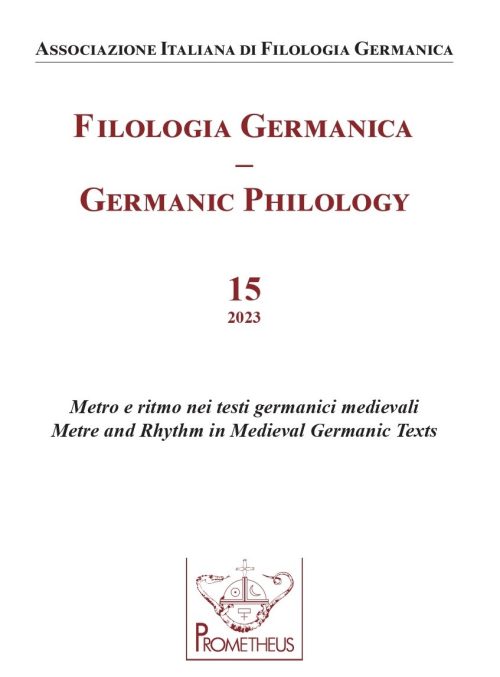The emergence of affricates in English: alliterative and other verse evidence
DOI:
https://doi.org/10.14672/fg.v15i.2432Parole chiave:
Old English, Medieval English, phoneticsAbstract
This paper addresses the emergence and development of palato-alveolar affricates /tʃ dʒ/ in English, using spelling evidence, metrical and otherwise, from OE and ME. The affricates developed from the reflexes of Gmc velars in palatal contexts. From the earliest records, the scribes indicate a distinction between velar and palatal reflexes, but there is no certain evidence of phonetic affricates until the thirteenth and fourteenth centuries, in the form of <t-> and <d->. The velar and palatalised reflexes continue to alliterate until the late-tenth century for Gmc *g, and well into ME for Gmc *k. As alliteration is based on identity of sound, such alliterations suggest that these reflexes were allophones and that they were not affricates. Verse evidence is also exploited for its clues as to the metrical weight of the pre-affricates; it is also indicative of non-affricates for OE and early ME. For the reflexes of Gmc *g, a few ME scribes maintain a graphemic contrast between the voiced plosive and pre-affricate on the one hand, and fricative and approximant realisations on the other. Structural sequences (phonetic affricates) may have developed in ME, as the pre-affricates block open syllable lengthening and induce shortening of the preceding vowel. Full-blown phonemic affricates (or contour segments) seem to have developed in late ME and were influenced by the fact that a number of French loans had phonemic affricates without distributional limitations. The voiced affricate developed later than its voiceless counterpart.
Pubblicato
Fascicolo
Sezione
Licenza

Questo lavoro è fornito con la licenza Creative Commons Attribuzione - Condividi allo stesso modo 4.0.
CC-BY-SA



